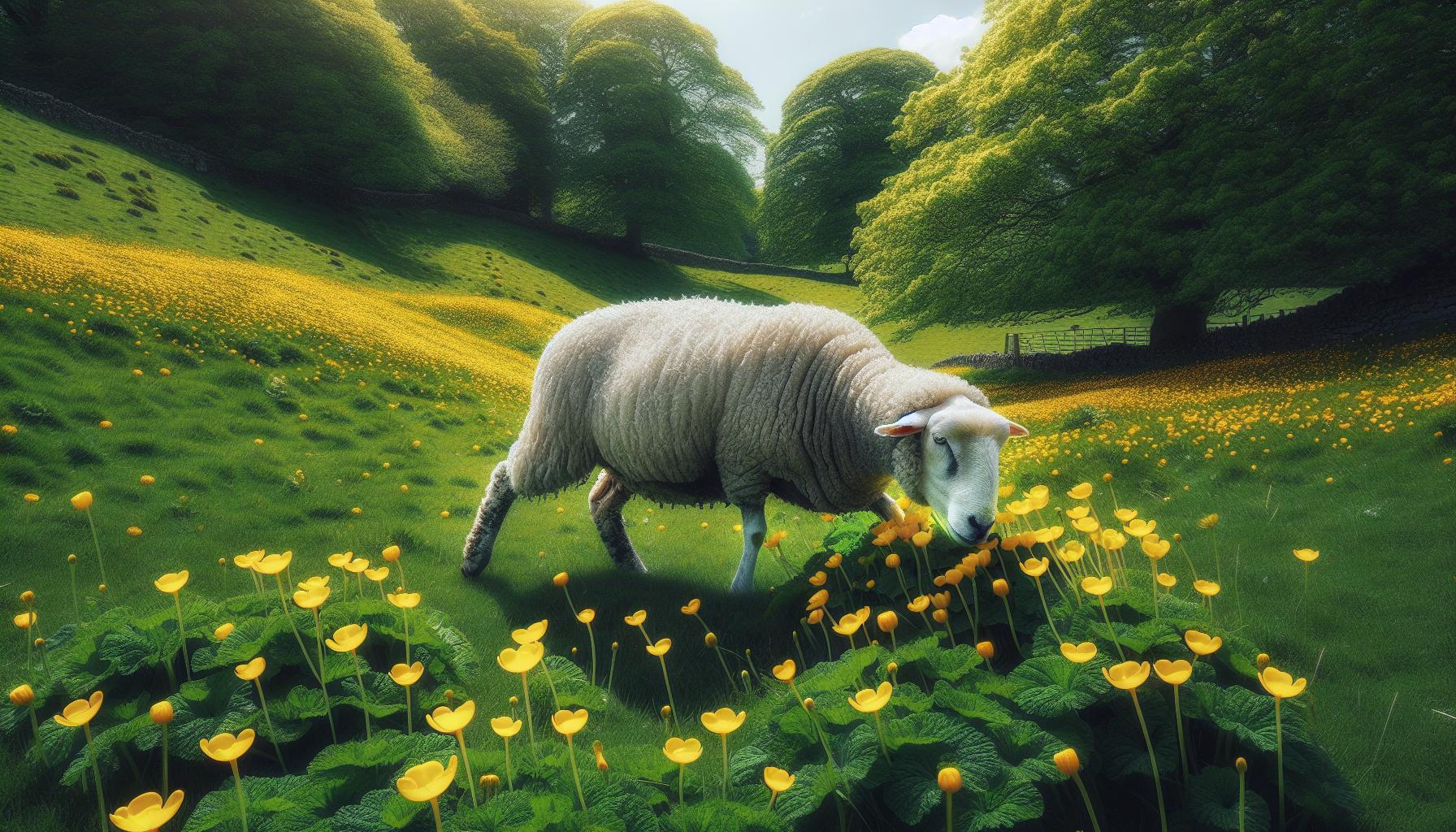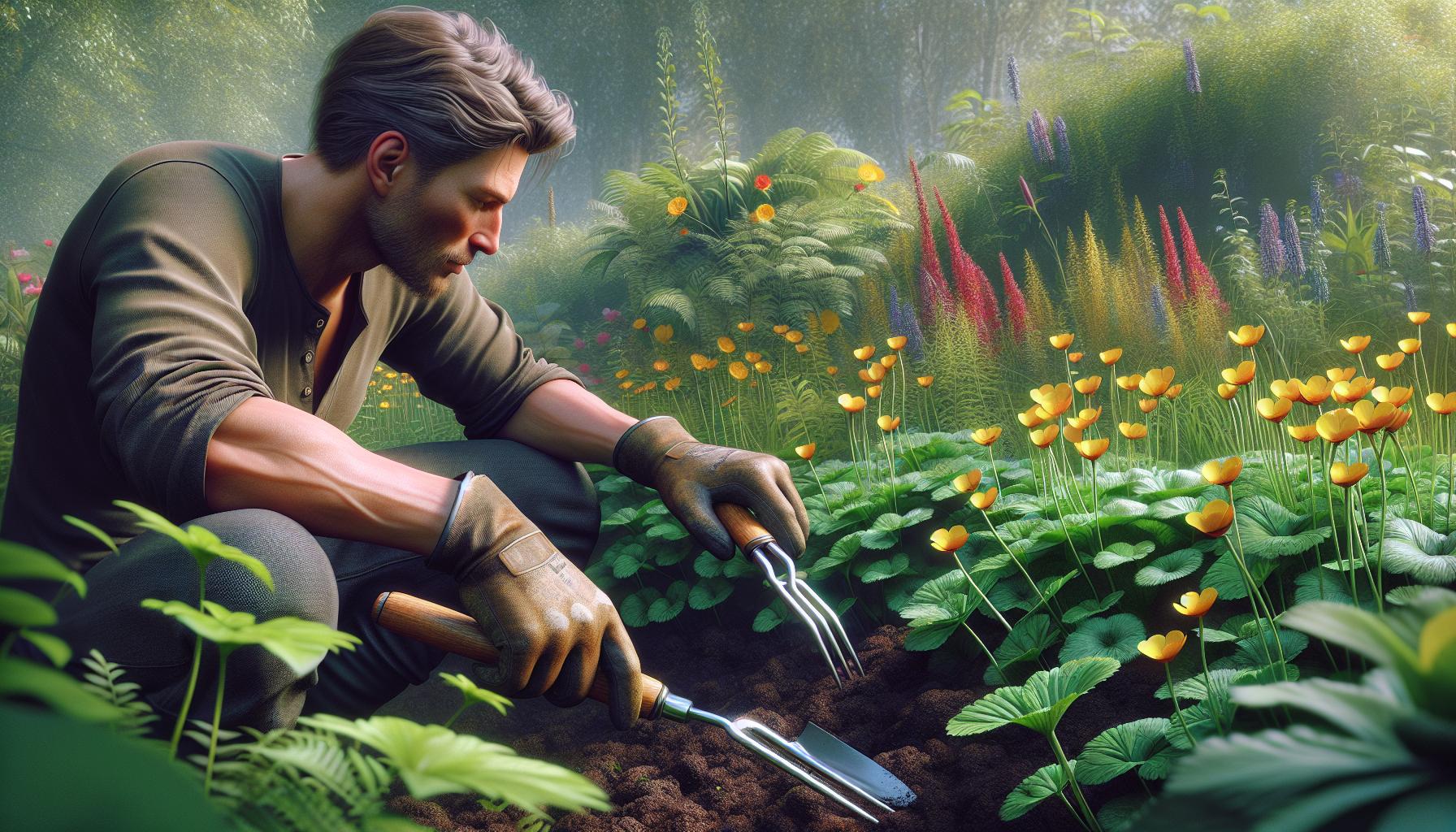
Ever found yourself staring at a sea of yellow, wondering how your garden turned into a buttercup battlefield overnight? You’re not alone. Buttercups, while pretty, can be a gardener’s nightmare, spreading faster than gossip in a small town. Their tenacity to take over is matched only by their resilience against being ousted. But don’t despair; you’re about to begin on a mission to reclaim your green space.
In this guide, you’ll discover not just the ‘what’ but the ‘how’ of banishing buttercups from your garden without resorting to harsh chemicals. From the organic gardener’s secret weapon to a counterintuitive mulching method, you’ll learn actionable, earth-friendly strategies that actually work. Say goodbye to being overrun by these golden invaders and hello to a thriving, buttercup-free garden.
Identifying Buttercups
Appearance of Buttercups
Imagine your garden is an artist’s palette, and buttercups are the yellow splashes that no one invited. These invaders are more than just a splash of colour; they’re a gardener’s challenge wrapped in a pretty package. Each buttercup flower is a masterpiece of nature, with five glossy yellow petals that seem to glow as if lit from within. But don’t let their beauty fool you. Their leaves, three-lobed and deeply toothed, are the first clue in their identification, as distinctive as a fingerprint in the plant world. With my years of battling garden invaders, I’ve learned to respect the buttercup’s cunning disguise. Its charm belies a resilience that can take over your garden faster than you’d believe.
Different Varieties of Buttercups
Dive deeper into the buttercup saga, and you’ll discover that not all villains wear the same mask. The Creeping Buttercup, Ranunculus repens, is the most notorious, crafting a network of stolons to conquer new territories. Picture it as an army of doppelgangers, each one ready to claim a plot of your garden. Blooming between May and August, its yellow flowers are a deceptive signal of its aggressive intentions. On the other hand, the Bulbous Buttercup, Ranunculus bulbosus, blooms earlier, from March to June, subtly distinguishing itself with slightly smaller and narrower leaves. Even experienced gardeners might need a second glance to tell these two apart, but knowing your enemy is half the battle won. In my relentless pursuit of a buttercup-free haven, I’ve come to appreciate the subtle differences between these varieties. This knowledge is a powerful tool in the hands of those who dare to reclaim their gardens from the clutches of these yellow invaders.
Negative Impact of Buttercups

Toxicity to Livestock
Imagine your tranquil pasture, a picturesque scene right out of a pastoral painting, but lurking within its lush green is a silent marauder – the buttercup. Known for its vibrant yellow blooms, this plant holds a dark secret: it’s toxic to livestock. Animals, including prized horses and hardy cattle, can suffer significantly if they ingest fresh buttercup. Symptoms range from excessive salivation to severe digestive distress. Protoanemonin, the compound responsible for these toxic effects, loses its potency when the plant dries, making hay safe. But, the fresh plant is a different story. With reports of livestock avoiding buttercups due to their bitter taste, one might wonder, is nature’s warning system enough? In my decades of gardening and farming insights, I’ve learned it’s a risky gamble to take. Fields that seem safe post-harvest can turn into perilous feeding grounds in the spring.
The irony doesn’t stop there. Buttercups, even though their toxicity, have a resilience that allows them to survive and flourish even when other plants succumb to grazing pressure. This resilience not only poses a risk to livestock health but also prompts a deeper examination of our pasture management practices. Are we unknowingly nurturing a yellow peril?
Effects on Garden Plants
Switching gears from the pasture to the garden, the tale of woe continues. Buttercups, particularly the Creeping variety, are not content with merely existing. They aim to conquer. Their vigorous growth and ability to spread over a 40-square-foot area in just a year highlight their ambition. But it’s their knack for draining potassium from the soil that truly undermines the health of surrounding plants. In gardens where every nutrient counts, this act of theft can lead to disappointing harvests and lackluster blooms.
Also, buttercups’ preference for moist, well-watered conditions makes them formidable foes in lawns and ornamental beds alike. They create a catch-22 scenario: water your garden to support your plants, and you’re also nurturing the very weed you seek to control. Over the years, I’ve come face to face with buttercups’ ruthless efficiency in choking out desirable flora. They’re not just competing for resources; they’re effectively altering the soil’s chemistry to their advantage.
In tackling these yellow invaders, gardeners and farmers alike face a shared challenge. It’s a reminder that nature’s beauty often comes with hidden complexities. As we investigate deeper into strategies for managing buttercups, keep in mind that understanding their impact is the first step towards reclaiming control.
Methods to Control Buttercups

Manual Removal
You’ve probably never looked at a buttercup and thought, “I’ll need a strategy to take you down.” Yet, here we are. In my years of battling garden invaders, manual removal of buttercups ranks high for sheer grunt-work satisfaction. Imagine it: you, a sharp trowel in one hand and determination in the other, diving into the heart of the enemy territory. But the catch? It’s all about timing and technique. Spring is your golden hour, when buttercups are young and roots are manageable. Twist and pull with a fork-like tool to get every last runway of roots. It’s akin to extracting a difficult tooth; leave no root behind to prevent regrowth. Keen gardeners whisper of victories against buttercups thanks to vigilance and this method, but be warned – it’s a marathon, not a sprint.
Herbicidal Treatment
If the thought of getting down and dirty doesn’t appeal, herbicides might be your weapon of choice. It’s where science meets sorcery in the garden. A concoction named Killex, boasting active ingredients such as 2,4-D, Mecoprop, and Dicamba, is touted as a formidable foe against the buttercup onslaught. It’s a case of a little going a long way – spot spraying this mixture directly on your leafy adversaries limits collateral damage to the plants you’ve pledged to protect. But heed this warning – while chemicals offer a quick fix, they’re not a silver bullet. The environment in your crossfire, always check local regulations. Canadian Tire is a known arsenal for such goods, but always glove up; safety first. In my two decades of green warfare, I’ve seen herbicides turn the tide of battle, yet the true victory lies in persistence and follow-up assaults.
Natural Remedies
For the eco-warriors who tread lightly upon this Earth, fear not. Your arsenal is plentiful, with EcoSense leading the charge. This iron-based spray, non-toxic and friendly to everything except your green-gazed foes, requires patience and precision in its application. A dry season spell is your ally here; multiple applications will see buttercups succumb without the guilt of chemical warfare weighing heavy on your heart. It’s a testament to human ingenuity – controlling pests without harming our planet. Sometimes the gentlest touch wields the strongest force, a lesson I’ve learnt over countless seasons. Beyond sprays, welcoming natural predators and fostering a healthy, competitive lawn are subtle tactics that can see your garden emerge victorious in this silent war against buttercups.
Transitioning from one method to the next, you’re not just eradicating a weed; you’re engaging in a deeper dialogue with nature. Whether it’s through the sweat of your brow, the science of chemistry, or the harmony of natural balance, the campaign against buttercups is as much about preservation as it is about elimination.
Conclusion
Tackling buttercups in your garden is no small feat but with the right approach, you can keep them at bay. Whether you opt for manual removal, chemical treatments like Killex, or prefer the eco-friendly route with products like EcoSense, what’s crucial is consistency. Remember, it’s not just about dealing with them once but maintaining vigilance to prevent a resurgence. Adapt your strategy as needed and don’t shy away from combining methods for more effective control. With patience and persistence, you’ll find the balance needed to manage these invasive plants while keeping your garden thriving. Your efforts will not only enhance the beauty of your outdoor space but also contribute to the health of its ecosystem.
Colin Macmillan is a seasoned entrepreneur and the CEO of Riverwood Landscape, a leading landscaping company based in Canada. He has been at the helm of the company since leaving high school, demonstrating his strong leadership skills and business acumen.
Colin’s expertise lies in various aspects of landscaping, including lawn care, interlocking, sod installation, and commercial maintenance. His hands-on approach and dedication to the craft have been instrumental in building Riverwood Landscape into a reputable brand.
One of his most notable achievements is the creation of a successful landscape franchise that services multiple locations. This accomplishment underscores his strategic thinking and ability to scale operations effectively.
Colin has also had the privilege of working with Guelph Hospital for landscaping and maintenance, a testament to the trust and reliability that his company has earned over the years.
His professional mission is to offer the best services and experiences for customers, a goal that he tirelessly pursues. Colin’s commitment to excellence and customer satisfaction continues to drive the growth and success of Riverwood Landscape.








